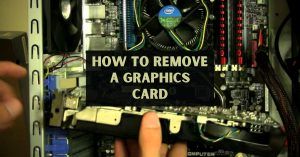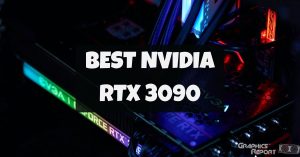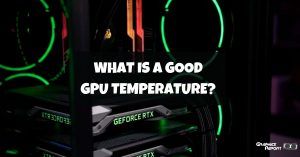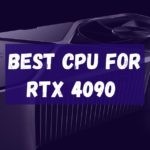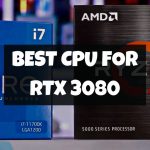
Your graphics card is the driving force of your PC in many ways as it is responsible for powering your display, then playing games, and doing productivity after that.
In many builds, the graphical processing unit is the most expensive part consuming up to half of the entire budget, so it’s easy to understand why you’d be pissed when it’s not working correctly.
Let’s dive deep into the many issues that can cause your GPU to act finicky and prevent it from even being detected.
AMD Or Nvidia Graphics Card Not Detected.
You should know what GPU is powering your system, whether it’s from AMD or Nvidia, and also the specific model. It will help streamline the troubleshooting that is to follow and would allow you to perform less overall work, too.
1- Enable The Graphics Card.
It could be possible that your GPU is disabled within the Windows settings meaning that its full functionality has been turned off for some reason, so you will need to enable it for it to work again.
- Press the Windows button + R
- Type “devmgmt.msc”.
- Look for your card under the Display adapter option.
- Press right-click on it and select enable.
If you don’t see the option for enabling the graphics unit, then it means that it’s already enabled. However, if you do not see it under display adapters at all, there is something else that’s preventing it from being detected. Make sure to restart your PC afterwards.
At this point, try removing your GPU and installing it again correctly. Often, it’s the card itself that is not slotted correctly into the PCIe slot in the first place.
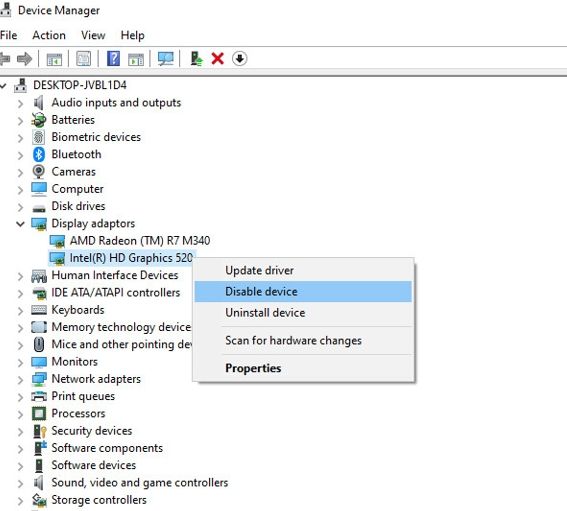
2- Use Command Prompt.
If the solution mentioned above does not turn in a favorable result, then you will want to force your system to detect your graphics card via the command prompt (or PowerShell) in Windows.
Sometimes, your system does not recognize the card installed even though it is there, so a hard refresh is needed to make your computer get its act together and detect your GPU correctly. To perform this task, you need to,
- Press the Windows button + X
- Select the Command Prompt (admin) option. OR, Windows PowerShell (admin).
- Type in “bcdedit /set pciexpress forcedisable” and press Enter.
This will execute the command and force your computer to recognize your display card. Just restart your PC after this and make sure you have the latest drivers installed.
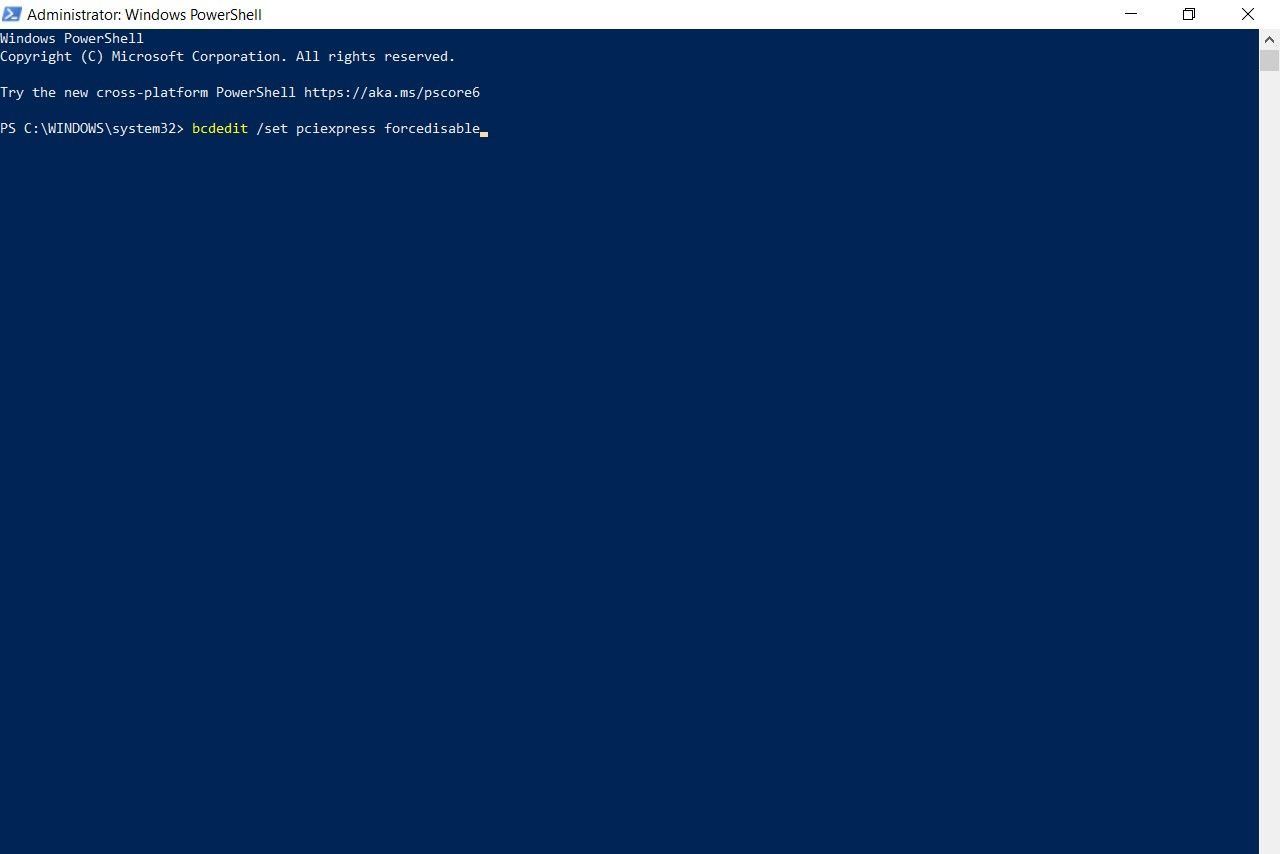
3- Install GPU Drivers.
Drivers are an essential part of your computer since they allow for proper communication between the various components of your system. There are drivers for your graphics card as well, and they exist to make you get the best out of it.
It’s highly recommended to download the right drivers and keep them updated to avoid any performance issues or weird bugs, like, you know, not having your GPU detected (duh).
So make sure you have the correct drivers installed in your computer that matches your graphical processing unit completely. If you don’t know the ins-and-outs of your video chip and are unaware of how to install drivers, then I recommend you to check out a handy guide to get you on track.
All three graphics manufacturers in the world, AMD, Nvidia, and even Intel, have proprietary software that allows you to update your drivers automatically and adjust some other settings along with allowing you to monitor your GPU.
- AMD Radeon Software (2020 Adrenalin Edition).
- Nvidia GeForce Experience.
- Intel Driver & Support Assistant.
You can also manually update your drivers if you want to by going to the respective manufacturer’s website and searching for your specific driver.
In fact, in some cases, new updates to drivers can be unstable, causing unusual crashes and performance issues in your applications/games, so you will have to roll back your drivers to the previous update, but this happens seldom.
4- Check Your Physical Installation.
As I mentioned before, your actual GPU could be installed incorrectly or loosely in your motherboard, so give it a well-informed look to find out if that’s the case.
There could be sagging in your graphical processing unit, or maybe the unit hasn’t properly connected to the PCIe slot, so make sure to inspect anything fishy looking and fix it.

For good troubleshooting practice, I recommend you to remove and reinstall your graphics unit again just to reset everything manually.
I would also recommend inspecting the PCIe slot to see if it is defective or broken. Try removing your video card from your current slot and connecting it to a different PCIe slot to see if that works.
5- Check BIOS Settings.
BIOS or Basic Input/Output system is your first and most rooted connection to your computer. It provides a barebones overview and settings control of your PC before any OS is installed on it.
The first time you boot into your computer, you will see your motherboard manufacturer’s BIOS in which you can check if all of the components inside your system are installed and working correctly.
Sometimes, your GPU can be disabled in the BIOS because your motherboard is actually utilizing your CPU’s onboard graphics and not the discrete or dedicated one that comes from your video card, thus not getting detected inside Windows.
Alternatively, your video card could be installed incorrectly, and that’s why it’s not showing up inside the BIOS or Windows. To check if it is installed correctly or enabled, follow along,
Boot into your BIOS by turning off your PC, turning it on, and pressing F2 or the Delete key repeatedly. Once inside, navigate over to your chipset settings and select the dGPU Configuration and enable this option.
Now, save the newly applied settings and restart your computer. This will allow your system to power itself with the discrete GPU present inside your PC instead of the integrated capabilities present on your processor.
Note: If there is an option to select PEG (or PCIe) as the primary graphics option, then you will need to choose that as well.

6- Show Hidden Devices.
It is possible that your new video card is not showing up on your computer because it is hidden at the moment. To make sure that it’s not showing up because of its cowardly hiding,
- Press the Windows button + R
- Type “devmgmt.msc” and press Enter
- Navigate to the top of the windows and select View
- Now select the “Show hidden devices” option.
- See if your GPU shows under the “Display adapters” option. Suppose it does then enable it and restart your computer.
- If it doesn’t show up, then select the Display adapters option and (on the top of the window) click on Action.
- Select the “scan for hardware changes” option and check if it shows up now. If it still isn’t being detected, then keep moving along this guide to try other solutions.
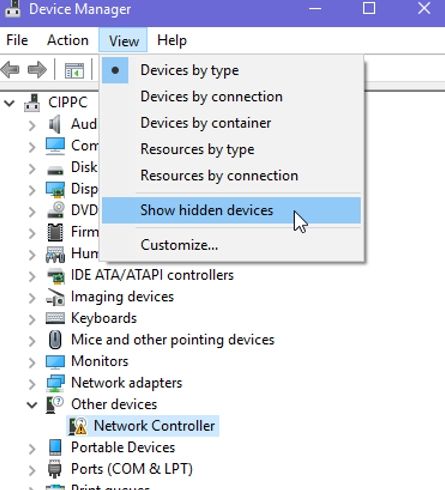
7- Update Your Bios
It is highly recommended to keep your BIOS updated and stay on the latest version available to avoid any compatibility, security, or performance issues. Wrong or outdated BIOS can significantly downplay your system by under-utilizing many components connected to your motherboard.
Different manufacturers have different BIOS, and you need to be aware of what you’re already rocking to step any further into updating it.
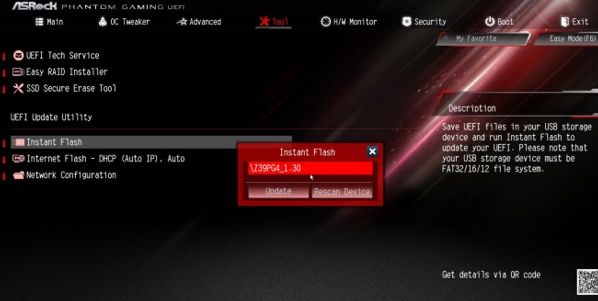
Be warned, fiddling with your PC’s BIOS is not for the uneducated as any little misstep can even potentially cause damage to your hardware, so make sure you know what you are doing. Apart from that, updating your BIOS is pretty straightforward, albeit a skillful task.
You can download the latest version available easily from your motherboard’s manufacturer’s website like MSI, ASUS, Gigabyte, and AS Rock.
8- Uninstall And Re-Install The Drivers.
Your drivers allow for proper communication between your GPU and Windows (aka your game), so if there is any problem lies in the process, it will surely hurt your PC’s output and, in this case, render your display card unusable.
Now don’t worry, I don’t mean unusable as broken, I meant that a corrupted installation or download could mess up your drivers.
For that reason, you should uninstall your current drivers, reboot your PC and then download the latest drivers available for your card again, and then restart your PC, again. It should do the trick if the corrupted rivers were the obstacle between your graphics unit and your OS.
9- Set Your Graphics Card To Default.
Windows automatically detects and chooses the most appropriate graphical option to power applications, but, sometimes this can actually interfere with your discrete graphics processing unit and run games on the integrated graphics present on your CPU.
So it is best to set your PCIe (dedicated) GPU as the default one to power certain applications like, for example, CS:GO.
There are 2 different ways you can do this. First is through your respective manufacturer’s software like Nvidia Control Panel or AMD Radeon Settings that are accessible by right-clicking anywhere on your desktop. And second is via the actual graphical settings baked into Windows 10’s Display section.
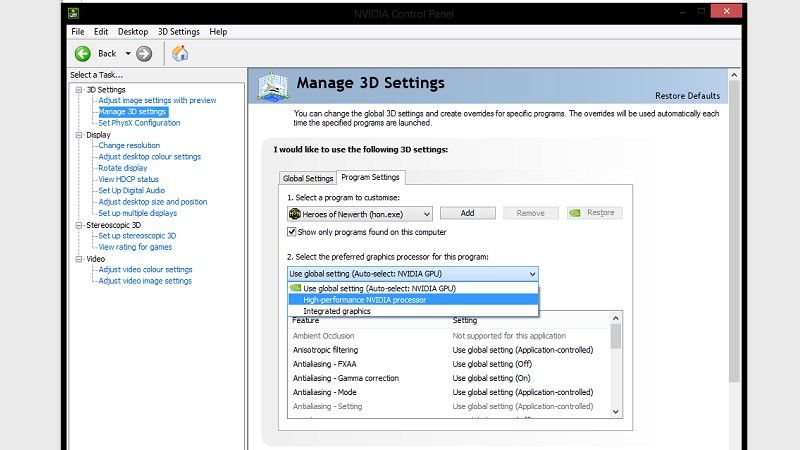

10- Update Windows to fix Graphics Card not Detected.
This goes without saying, but I’m still saying it: Please keep your stuff UPDATED. Drivers, BIOS, applications, and your OS itself, all fall under this banner. There is a reason why all these companies regularly update their software; so they can stray past bugs, security and performance issues, and any other thing in between.
Running on an older version of Windows, especially seven or XP, is unacceptable in this day and age because it can seriously affect your game’s performance and cause weird problems like your GPU not getting detected, case in point.
So, please keep Windows updated and stay ahead of the curve on relevant forums and social platforms about any issues or unwanted issues popping up in new versions of Windows so you can avoid them. It’s finally time to hit that “Update now” option instead of “Remind me later.”
11- Motherboard Compatibility Issue.
You are at point break. If nothing works, no matter what you try, then your motherboard is simply incompatible with your graphics unit. This is rare but still possible.
Here, the last thing you can give a shot is installing a new BIOS (or updating your current one) and see if that fixes the problem.
Your motherboard’s PCIe slot could be defective or broken too, but you can’t do much here except for trying to insert the GPU in a different slot (refer to point 4). Otherwise, it’s time to throw some cash towards a new motherboard.
Final Verdict:
There is an excellent chance that your hardware is completely fine, and the problem lies within your system’s software or incorrect hardware installation.
All you need to do is troubleshoot as much as you can and to narrow out the problem because once the issue is identified, it becomes relatively easy to find a fix (that’s where this article comes in handy [^.~]).
If nothing ends your despair, then you likely have a faulty motherboard that you need to get repaired or changed. Happy troubleshooting!
Related articles:
- This effect requires gpu acceleration
- How to tell if your graphics card is dying?
- Gpu fans not spinning
- How long do graphics cards last
Frequently Asked Questions (FAQs)
1- How do I fix my video card not being detected?
You need to update your graphics drivers, run on the most recent version of the BIOS and make sure that your discrete GPU is enabled there and also in the Windows settings.
2- How do I get Windows to recognize my graphics card?
Updating your drivers, or Windows itself can fix this problem. You can also try to physically check your motherboard for anything fishy like a broken PCIe slot. Otherwise, forcing your GPU to be detected in Windows or enabling it in settings will solve your problem.
3- How do I know that my GPU is detected in the BIOS?
You’ll need to check the Video, Advanced, On-board devices, or Integrated Peripherals setting in the BIOS to see if your GPU comes up there.
If it doesn’t show up, then you will need to enable or select discrete graphics in your BIOS as your main graphics option, and you may also need to physically check the installation of your video unit to see if it’s loose or incorrectly installed.


